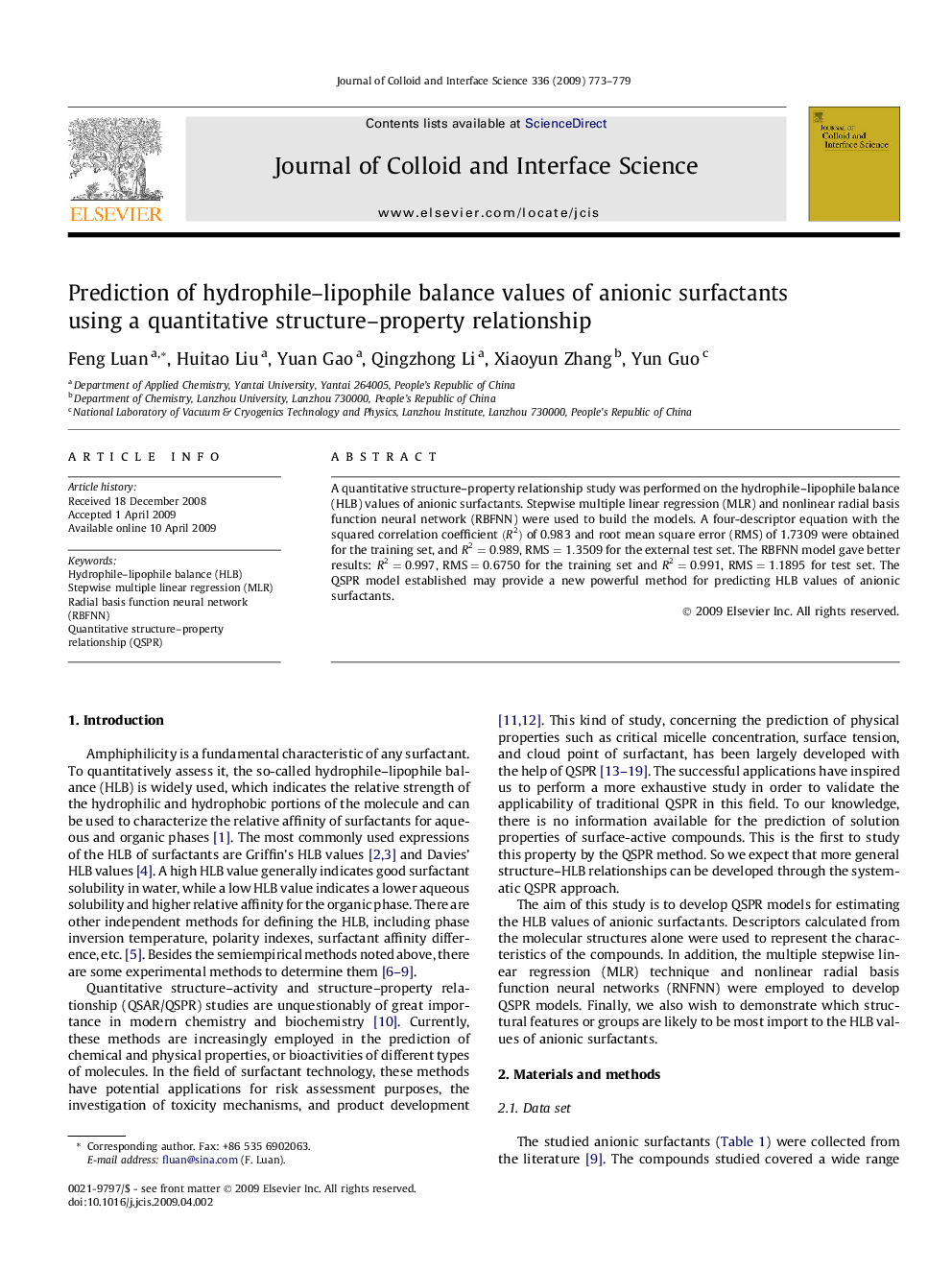| Article ID | Journal | Published Year | Pages | File Type |
|---|---|---|---|---|
| 610192 | Journal of Colloid and Interface Science | 2009 | 7 Pages |
A quantitative structure–property relationship study was performed on the hydrophile–lipophile balance (HLB) values of anionic surfactants. Stepwise multiple linear regression (MLR) and nonlinear radial basis function neural network (RBFNN) were used to build the models. A four-descriptor equation with the squared correlation coefficient (R2)(R2) of 0.983 and root mean square error (RMS) of 1.7309 were obtained for the training set, and R2=0.989R2=0.989, RMS=1.3509RMS=1.3509 for the external test set. The RBFNN model gave better results: R2=0.997R2=0.997, RMS=0.6750RMS=0.6750 for the training set and R2=0.991R2=0.991, RMS=1.1895RMS=1.1895 for test set. The QSPR model established may provide a new powerful method for predicting HLB values of anionic surfactants.
Graphical abstractA general quantitative structure–property relationship study was performed on the hydrophile–lipophile balance (HLB) values of anionic surfactants. A four-descriptor equation was obtained by the linear method. The nonlinear model was also studied to improve the results.Figure optionsDownload full-size imageDownload as PowerPoint slide
